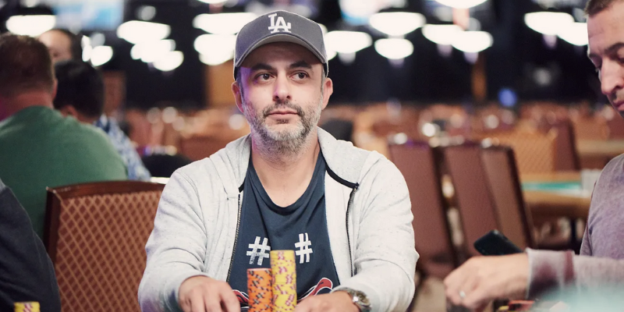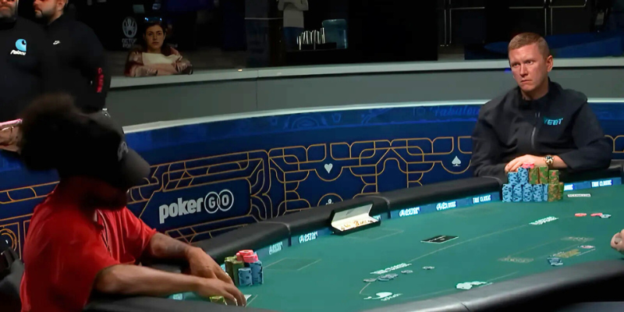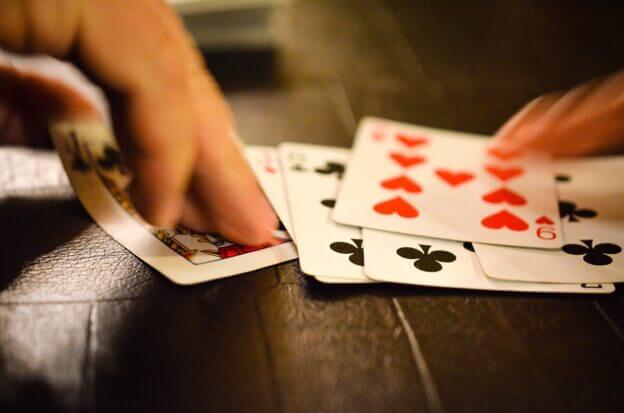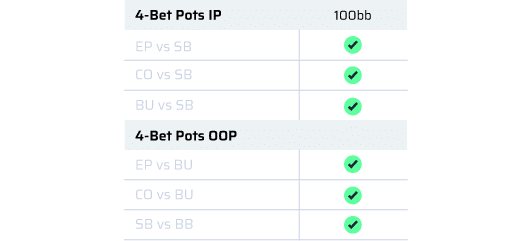In case you are new to poker, c-betting is short for “continuation betting” and it refers to a bet made on the flop by the pre-flop raiser.
C-betting frequencies and ranges depend on many factors, and that’s why it’s easy to have c-betting mistakes. Many PLO players will typically over c-bet as the preflop raiser, specifically with middle strength hands or on specific board textures. You’re going to find an edge by c-betting better than your opponents by understanding what your opponents are doing wrong and how to exploit it.
Flop c-betting mistakes are costly in PLO, as it’s easy for them to compound over multiple streets. You simply build a bigger pot and afterwards find your middle strength hand can’t stand the heat versus a calling or raising range. Once you chose a path, you can’t go back on it. The only way to avoid that is by playing the correct strategy on the flop.
Wet Boards
A wet board is a board that offers a lot of draws.
When the board is very wet, you have to really focus on runouts. Imagine you bet, get called, and the turn completes possible draws. Unless you are often making a strong hand on a draw-completing turn, you’ll often be forced to check.
You will make it very easy for your opponent to stab into you on the next street, or often anyway lose at showdown.
If you don’t have some sort of backup on wet boards, something that will help you either turn your hand into a bluff or a more effective bluff catcher, you’re probably just better off checking back.
In PLO, focus your bluffs on wet boards with key blockers like nut flush blockers on two-toned flops, or pair and straight draw blockers on rainbow, connected flops.
Dry Boards
On dry boards, it’s also important to hold blockers, otherwise our opponent could turn their hands into bluffs quite frequently. If he things you are c-betting too often and he has any kind of blocker, it makes it easy for him to float or put in a profitable bluff-raise with a high frequency.
Both straight draws and two pair hands increase in value on rainbow boards, as they have less turns to worry about. Players might be willing to raise more often with these hands.
For this reason, you can use blockers to limit your c-betting frequency. It can be better to check back and keep the pot small and try to realize your equity when you get to the turn or the river as cheap as possible.
Here’s a quick rundown of a couple of c-betting decisions in Pot Limit Omaha.
When to C-Bet
When we think about it, we have three reasons to c-bet:
- Value Betting
- Bluff Betting
- Protection Betting
Generally speaking, your very strongest hands want to play pots that are as big as possible to get maximum value.
When you are betting for value or betting as a bluff, your primary objective should be to bet a hand that is capable of playing a large pot, and being able to also bet on the turn and river on as many runouts as possible.
If you wait to bet until the river your bet sizing will be considerably smaller, so there isn’t a lot of leverage behind your bet. You need to build pots in the right moments and you need to size them according to what you want to accomplish.
The same thing is true for bluffs.
The main idea with protection betting is to deny equity and prevent getting bluffed and/or getting pushed off equity. Very often it is related to bad equity realizability, which means you have no good runouts.
Whenever your hand lacks side components, it’s easy to get forced into a bad position where you have to go into check-fold mode. C-betting some vulnerable hands with key blockers might be a fine way to take the pot down before the board gets too ugly for your hand.
Bluffing
Bluffing is also a lot more profitable when you are holding blockers in your hand. Holding a flush-draw blocker or a pair blocker makes c-betting so much more likely to be the correct decision than without them.
If you c-bet your strong hands and medium strong hands and check with weaker hands, once you arrive to the turn and the river, you won’t have a lot of bluffs in your range. Bluffing starts on the flop, so if you want to have enough bluffs on the turn and the river, you have to include more bluffs into your betting range.
When to Check
When it comes to checking, we also have 3 reasons to do so:
- Pot-Control Checking
- Slow-Play Checking
- Give-Up Checking
The pot control check wants to play a smaller pot and realize equity. This is a typical medium-strong hand, one that doesn’t want to get check-raised in the flop, or doesn’t want to bet multiple times.
Slow playing in position is not really a big part of our strategy, but sometimes you have too much of the board and it’s almost impossible for our opponent to continue. That is when it might be better to check and try to induce a bet.
The give-up check is mainly just being ready to fold. And these give-up hands are not bluffing unless you turn a lot of equity or a really good blocker.
Medium Strength Hands
As mentioned early on, c-betting all your medium strong hands makes it easy for your opponent to push you off some of your hands by stabbing more aggressively on the turn and river.
You want to put most medium strong hands in your checking range so that you don’t give your opponent an easy exploit against your c-betting line.
Another problem with not checking your medium strong hands is that your checkback range becomes more vulnerable. That means once you check back and your opponent takes a stab, you will have a very high fold frequency.
A lot of your opponents will not protect their check-back range often enough, but you should be protected, especially against aggressive opponents.
A great way to understand poker ranges and practice c-betting is through poker tools, like our very own PLO Trainer Web App.
Conclusion to C-Betting
When c-betting, you want to check back your medium strong hands, and bet the very strongest (value) and weakest (bluff) hands in your range.
Blockers are key. When it comes to c-betting our value hands, choosing what action to take on wet or dry boards, and they are the key to bluffing as well.
Don’t bet too frequently or your opponents will notice your c-betting range is too wide and start exploiting you by raising or stabbing later in the hand more often.



